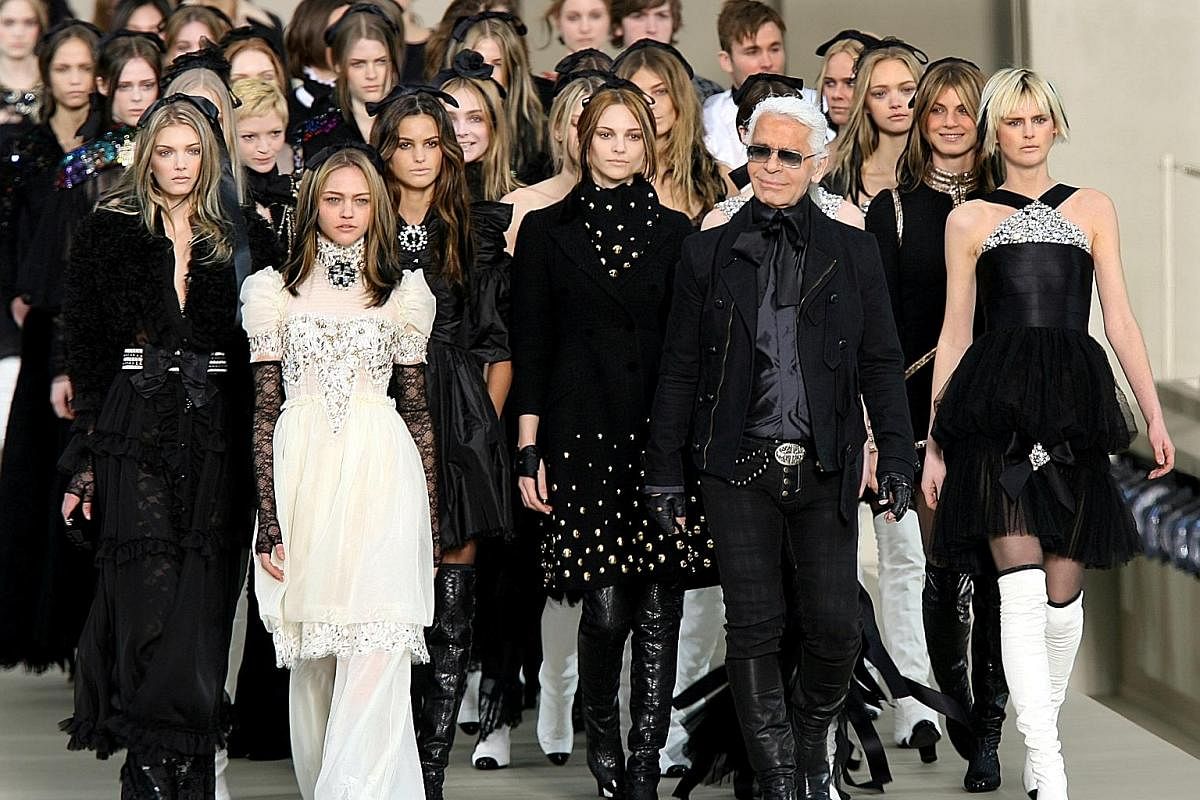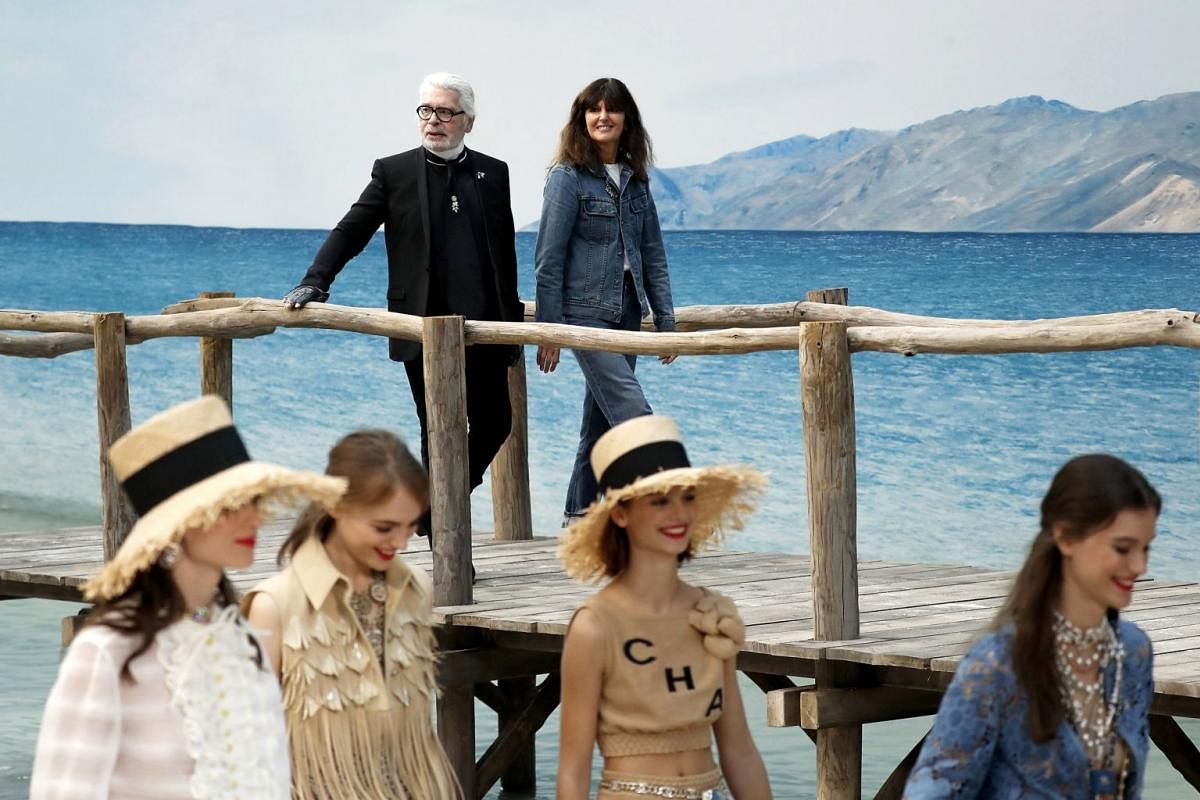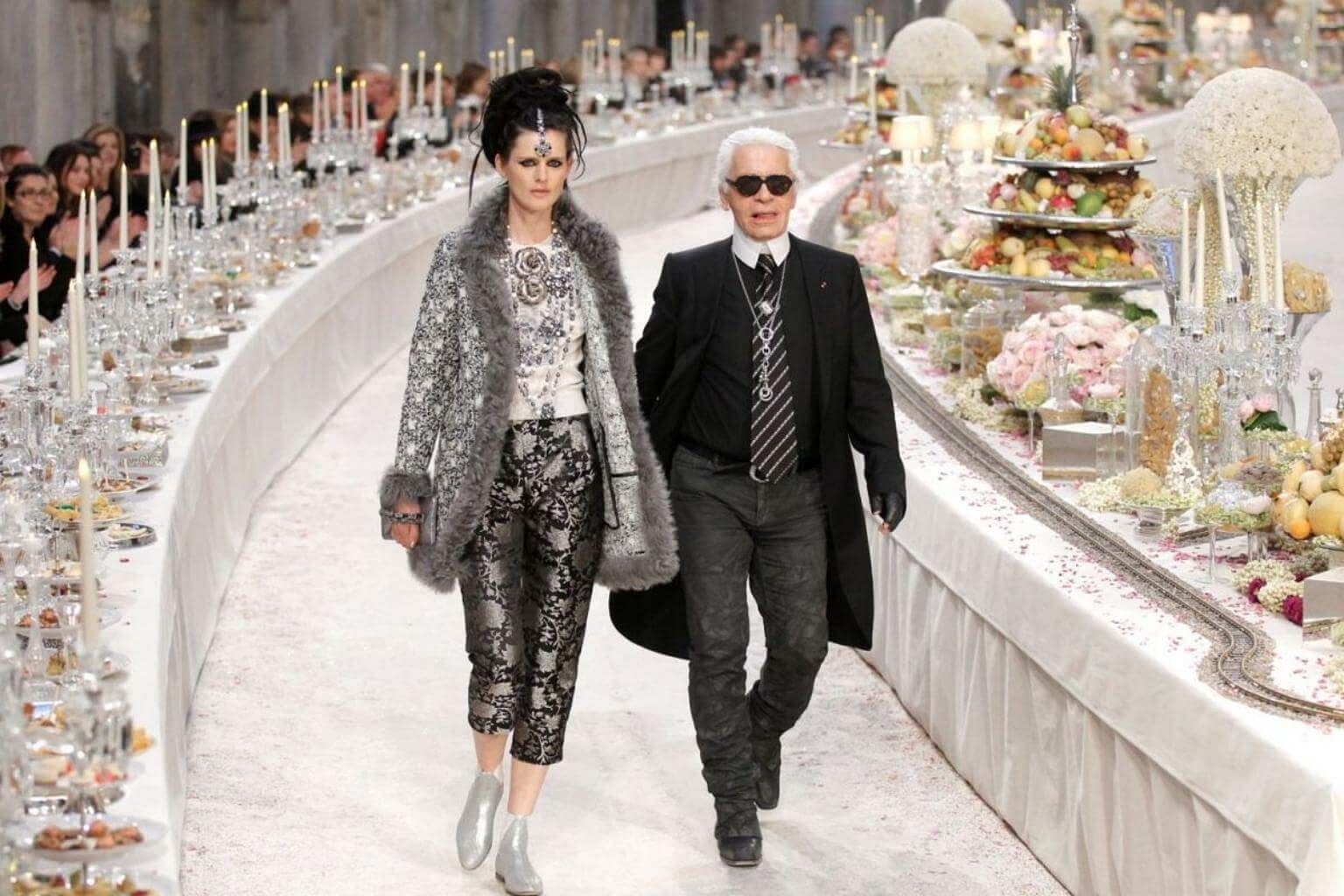He designs some of the most desirable, cherished and coveted things for women, yet sells his own multi-million-dollar collections of art and furniture with neither sentimentality nor material attachment.
He is an international celebrity, yet puts up a public identity so absurdly idiosyncratic he almost becomes his own caricature.
In a profile by New York Magazine in 2006, he had this to say about his work: "Marc Jacobs and all, they will have to wait. This is not an easy job because I have the understanding about Chanel and couture design that nobody has anymore. I have the training that nobody else has. This job is not free."
It feels only fair to talk about Lagerfeld's work in relation to his life, him having likened it to breathing. His lifetime contracts with Chanel and Fendi provided him the leeway to work, as he preferred, to his death. He was an ardent modernist who looked to the next and the new with endless projects including photography and a publishing imprint with Steidl.
And work to the end he did, even providing notes for the Fendi collection that will show in the coming weeks' Milan season. As inexhaustible as he was, the human condition demands an end.
After an unrivalled marathon career that outlasted all of his peers', Lagerfeld can finally allow himself rest in the pantheon of legends.
• Gordon Ng is a freelance fashion writer.
His cutting quips
Designer Karl Lagerfeld was an icon in the fashion world. But the outspoken designer's legacy stretches well beyond the fashion runway. He was also known for his witty repartee and oft controversial quips. Here are some of his most famous lines:
On himself
"I am like a caricature of myself and I like that. It is like a mask. And for me the Carnival of Venice lasts all year long."
On selfies
"They are this horrible thing where you are distorted. The chin is too big, the head is too small. No, this is electronic masturbation."
On interview etiquette
"I had an interview once with some German journalist - some horrible ugly woman. It was in the early days after the communists - maybe a week after - and she wore a yellow sweater that was kind of see-through. She had huge t*** and a huge black bra and she said to me: 'It's impolite; remove your glasses.' I said: 'Do I ask you to remove your bra?'"

On late American artist Andy Warhol
"I shouldn't say this, but, physically, he was quite repulsive."
On Chanel founder Gabrielle "Coco" Chanel
"What I do, Coco would have hated. The label has an image and it's up to me to update it. I do what she never did. I had to find my mark. I had to go from what Chanel was to what it should be, could be, what it had been, to something else."
On sports clothing
"Sweatpants are a sign of defeat. You lost control of your life, so you bought some sweatpants."
On designer wear
"Don't use expensive clothes as a screen for your personal doubts. Be proud of yourself and not only because you wear expensive designer clothes. They are great, but lots of people are happy without them." On his cat Choupette "She is like a kept woman. She has a strong personality. She has lunch and dinner with me on the table, with her own food. She doesn't touch my food. She doesn't want to eat on the floor. She sleeps under a pillow and she even knows how to use an iPad. She has two personal maids, for both night and day. She is beyond spoiled."
On intellectuals "
I hate intellectual conversation with intellectuals because I care only about my opinion."
On beauty
"Life is not a beauty contest, some ugly people are great. What I hate are nasty, ugly people... the worst are ugly, short men. Women can be short, but for men it is impossible. It is something that they will never forgive in life... they are mean and they want to kill you."
On children
"They grow so fast, and having adult children makes you look 100 years old. I don't want that."
On his iconic status
"I've always known that I was made to live this way, that I would be this sort of legend."
Compiled by Melissa Heng






